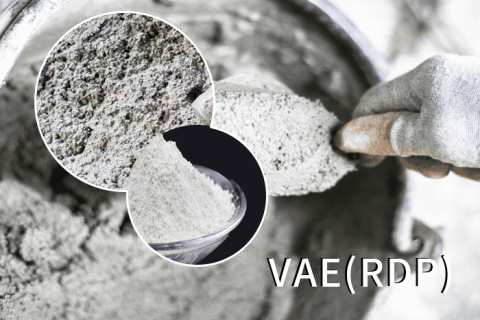
- Home
- >
News
Adhesive Additive VAE Re-dispersible Polymer Powder (VAE RDP), also known as Vinyl Acetate-Ethylene Redispersible Latex Powder, is a versatile and high-performance additive widely used in construction materials. It is specifically designed to address common challenges in modern construction and enhance the overall performance of building materials.
HPEG, or Hydroxy Polyether Glycol, is a versatile chemical compound widely used in the construction industry. It serves as a water-retaining agent, thickener, and stabilizer in various applications.
Redispersible polymer powder (RDP) is a key material in tile and construction adhesives, enhancing workability, bonding quality, and open time. It offers significant benefits to both tile setters and manufacturers, contributing to improved efficiency and reduced costs in the construction industry.
The article delves into the transformative impact of RDP Redispersible Polymer Powder on modern construction practices. This innovative additive is a cornerstone in enhancing the performance, durability, and sustainability of construction materials. By bolstering adhesive strength, flexibility, and workability of mortar and cement-based mixtures, RDP ensures superior cohesion and longevity of structures. Its water retention properties enable easier application and curing, particularly vital in diverse climates. Moreover, by improving material strength and durability, RDP contributes to sustainable construction practices, reducing maintenance costs and environmental impact. Versatile and compatible with various construction products, RDP is poised to play a vital role in meeting the evolving demands of the construction industry, shaping a future of resilient and sustainable infrastructure.
VAE Re-dispersible Polymer Powder is a white or light-colored polymer powder, which is the main additive for dry-mixed mortars such as cement-based or gypsum-based mortars. Mainstream products include vinyl acetate and ethylene copolymer rubber powder (VAC/E), ethylene, vinyl chloride and vinyl laurate ternary copolymer rubber powder (E/VC/VL), vinyl acetate and ethylene and higher fatty acid vinyl ester terpolymer rubber powder. Yuan copolymer rubber powder (VAC/E/VeoVa).
Water: Hydroxypropyl methylcellulose is soluble in water, and the aqueous solution is surface active, highly transparent and stable.
In the field of building materials, Hydroxypropyl Methyl Cellulose (HPMC ) is being regarded as a revolutionary product. Its multifunctional properties not only improve construction efficiency, but also greatly improve the performance of building materials. This renewable polymer brings a host of advantages to the construction industry, making it an emerging favorite.
1. Polycarboxylate Superplasticizer Powder adjusts the water consumption or sand ratio through experiments according to the concrete design requirements to reach the required water reducer dosage of slump, strength and setting.
VAE Re-dispersible Polymer Powder formed polymer film has good flexibility. The film is formed on the gap and surface of cement mortar particles to form a flexible connection. Thus, the brittle cement mortar becomes elastic. Mortar with redispersible emulsion powder is several times higher in tensile resistance than ordinary mortar.
In the context of today's rapid development of building materials technology, a product called VAE Re-dispersible Polymer Powder has become a new focus in the industry because of its unique performance and wide application prospects. This new material not only improves the performance of building materials, but is also highly recognized by the market for its environmentally friendly properties.
HPMC, or Hydroxypropyl Methylcellulose, is a versatile chemical compound that is widely used in the construction industry. It is a type of cellulose ether that is derived from natural cellulose and is a water-soluble polymer. HPMC is used in various applications in the construction industry, including:
Polycarboxylate superplasticizer is a new generation friendly environmental superplasticizer. It is a concentrated product, best high water reduction, high slump retention ability, low alkali content for the product, and it having high strength gained rate.It can be widely used in premix of common concrete, gushing concrete, high strength and durability concrete. Especially! It can be used in high strength and durability concrete having excellent capability .





![[Additives for mortar] VAE Re-dispersible Polymer Powder](https://img.waimaoniu.net/3193/3193-202403061048086409.jpg?x-oss-process=image/resize,m_fill,w_480,h_320)






